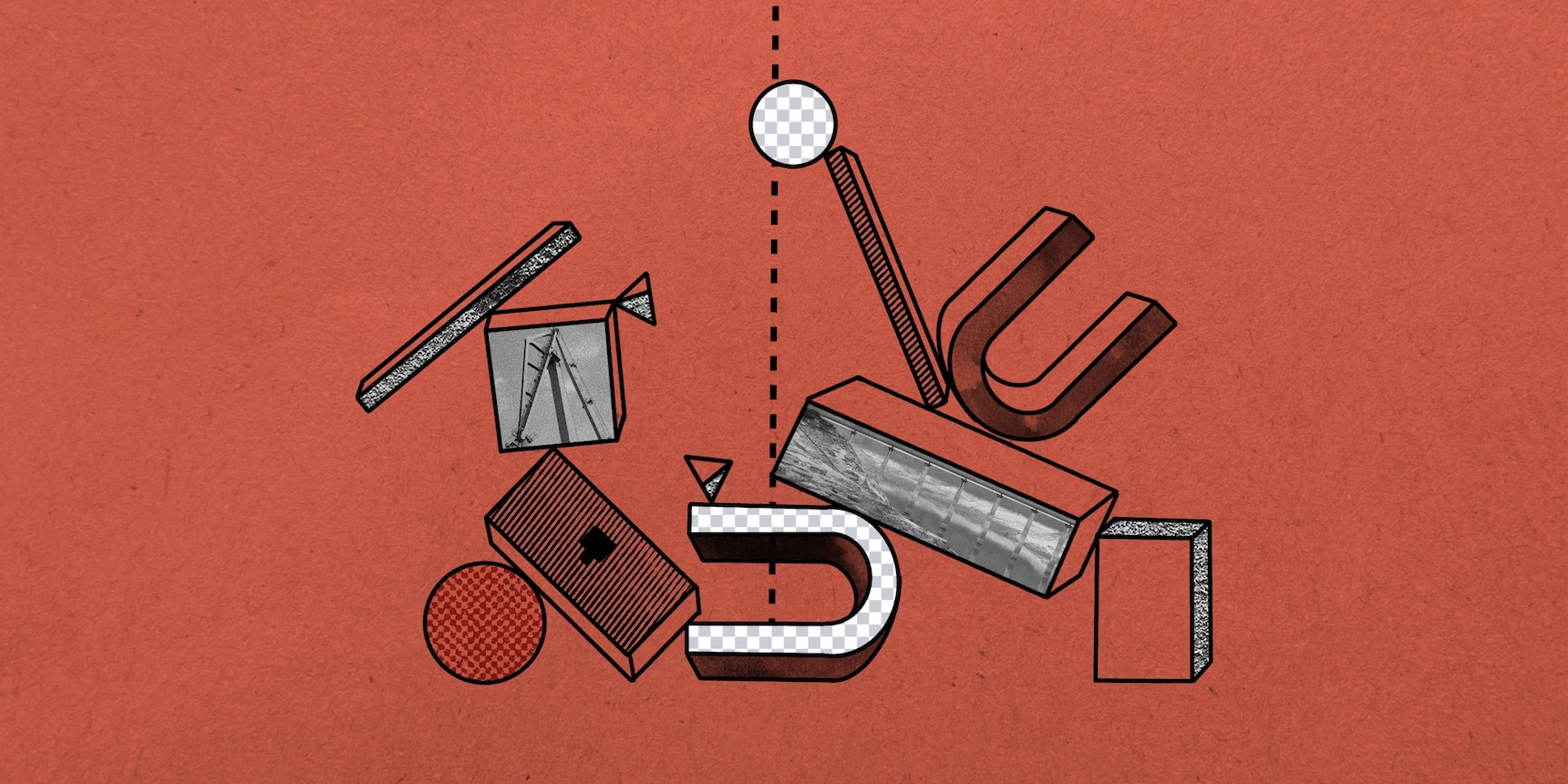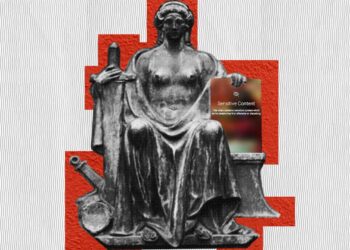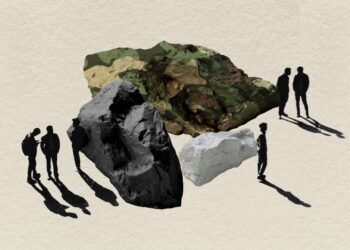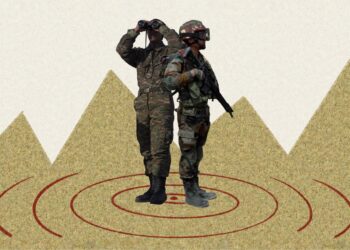
2022 saw Armenia’s struggle to diplomatize its security against the backdrop of its failed security architecture and Azerbaijan’s hybrid warfare tactics. Despite the complicated security situation on the border, Armenia and Azerbaijan engaged in active diplomacy, which however, did not yield any conclusive results.
Armenia’s Security Context of 2022
Throughout most of 2022, the situation on the Armenia-Azerbaijan border remained tense. From the beginning of the year, Azerbaijan has constantly violated the ceasefire regime, resulting in casualties. At the same time, Azerbaijan has also actively accused Armenia of violating the ceasefire regime, a mechanism it has consistently utilized to prepare the ground for militarized activities against Armenia or Artsakh.
Azerbaijan has been implementing multi-tiered hybrid warfare tactics, applying asymmetrical operations and gray zone tactics to encroach on Armenia’s sovereign territory while pretending that it is interested in achieving peace with Armenia. Through the utilization of salami slicing and borderization techniques, Azerbaijan has proceeded to temporarily take control over swaths of Armenia’s territory.
On February 22, on the eve of Russia’s invasion of Ukraine, Russia and Azerbaijan signed a strategic partnership document which raised their relationship to an allied level. This allowed Azerbaijan to utilize a policy of reciprocity with Russia, giving it a certain leeway in its aggression towards Armenia. As the war in Ukraine dragged on and Russia’s dependence on Turkey and Azerbaijan grew, Moscow became more and more indifferent to Armenia’s security concerns.
A manifestation of Azerbaijan’s hybrid warfare tactics against Armenia was the September 13-14 offensive against Armenia, including the regions of Gegharkunik, Vayots Dzor and Syunik. Just after midnight on September 13, Azerbaijani Armed Forces attacked almost the entire eastern border of Armenia, using different caliber firearms, mortars, grenade launchers and combat UAVs. As usual, Aliyev blamed Armenia for the attack.
On the evening of September 14, the international community, with the active involvement of the U.S., brokered a ceasefire. As a result of the Azerbaijani invasion Armenia reported 224 dead, over 1,000 houses damaged and 7,000 internally displaced. As a result of the September attack, as well as accounting for Azerbaijan’s advances into Armenia’s territory on May 12-14, 2021 and the escalation in Syunik on November 16, 2021, Azerbaijan is currently occupying 140 square kilometers of Armenia’s territory.
Although Baku initially blamed Armenia for attacking Azerbaijan, later President Aliyev did not conceal that Baku initiated the attack. One week after the September 14 ceasefire, Aliyev warned Armenia not to provoke Azerbaijan, otherwise “they would respond as necessary.” He even dismissed the importance of international actors, stating that no one can speak to Azerbaijan with ultimatums and that Armenia should not count on anyone for support. He also blamed Armenia for not taking steps to open the so-called Zangezur corridor and for not withdrawing its armed forces from Artsakh (the Armenian side has said several times that Armenian troops have left Nagorno-Karabakh).
Three weeks after the September escalation, a video was disseminated on Azerbaijani social networks showing how Azerbaijani special forces executed unarmed Armenian servicemen.
On September 28, three Armenian servicemen were killed as a result of Azerbaijan’s ceasefire violation. During the government session the following day, PM Nikol Pashinyan announced that Azerbaijani Armed Forces targeted Armenian troops which were carrying out engineering work within the territory of Armenia. Since the September 13-14 offensive, Azerbaijan has continued to violate the ceasefire regime while falsely accusing Armenia of doing the same.
On November 8, during “Victory Day” celebrations in Shushi, Aliyev stated that Azerbaijan attacked Armenia on September 13-14 to teach Armenia a lesson and expressed hope that Armenia “will eventually understand this and take care of their internal affairs, instead of digging the land in Karabakh.” He went on to say that Karabakh is their land and the Russian peacekeepers stationed there are temporary, as the period of their deployment is defined by the November 9 trilateral statement.
Aliyev also noted that after the September attack on Armenia, Azerbaijani Armed Forces have taken over strategic heights from which they monitor the Armenian cities of Sisian, Kapan, Goris and Jermuk (Aliyev used Azerbaijani aliases for the name places).
The Azerbaijani president went on to say that this was done to force Armenia to fulfill its international obligations, and as a defeated country, Armenia cannot behave the way it has been. Aliyev went further and announced that the objective was to draw a parallel with the Lachin Corridor, and in this context, force Armenia to agree to the so-called “Zangezur Corridor” as an equitable response for Baku’s allowance of access to Armenians via Lachin.
The European Monitoring Mission
Azerbaijan’s attack on Armenia’s sovereign territory on September 13-14 prompted active criticism from the international community, the EU and the U.S. in particular, both of whom finally overcame their decades-old policy of bothsideism and directly criticized Azerbaijan for its aggression. On October 6 in Prague, Armenia and Azerbaijan, through the mediation of the EU and France, agreed that a European Civilian Monitoring Mission (EUMM) would be launched on the Armenia-Azerbaijan border from the Armenian side. On October 14, the advance group of the EUMM arrived in Yerevan and on October 20, the 40-member team of EUMM arrived in Armenia from Georgia. The mission was deployed to ensure stability on the border and support the demarcation process.
On October 22, the OSCE also sent a need assessment mission to Armenia. According to a press release issued by the Polish Chairmanship of the OSCE press office, the purpose of the visit was to assess the situation in certain border areas, on the basis of the OSCE’s mandate and expertise within its comprehensive concept of security.
The European Monitoring Mission completed its mandate on December 19. Peter Stano, the EU Spokesperson for Foreign Affairs and Security Policy, said that the EU will send an expert team to Armenia in the coming weeks to consider the possibility of deploying a new mission to contribute to trust building between Armenia and Azerbaijan. On December 19, the European Council issued a statement, announcing that, the EU — in agreement with Armenia’s authorities — decided that the existing EU Monitoring Mission in Georgia (EUMM Georgia) will deploy a transitional planning assistance team in Armenia to enhance the EU’s awareness of the security situation, and contribute to the planning and preparation of a possible civilian Common Security and Defense Policy (CSDP) mission. The transitional planning assistance team is also expected to support the President of the European Council, Charles Michel, in the EU-facilitated normalization process between Armenia and Azerbaijan.
The Response of the CSTO to the Azerbaijani Attack
During an emergency meeting of Armenia’s Security Council following the Azerbaijani attack on September 13, Armenia decided to officially apply to the Collective Security Treaty Organization (CSTO) based on article 4 of its charter which states that an aggression towards a CSTO member is an aggression against the CSTO itself. Addressing parliament the following day, Pashinyan stated that Yerevan had asked the CSTO to ensure securing Armenia’s territorial integrity and to remove Azerbaijani forces from the territory of Armenia, including the territory which Azerbaijan has occupied since 2021.
Following Armenia’s appeal, Anatoly Sidorov, the head of the CSTO joint staff, arrived in Yerevan in the evening of September 15 with a fact finding mission. CSTO Secretary General Stanislav Zas arrived in Armenia on September 20. He met with the commanders of Armenian troops positioned on the border, local civilian authorities, and studied the areas that were shelled by Azerbaijan.
On November 23, the CSTO discussed providing assistance to Armenia at its annual summit which was held in Yerevan. Prime Minister Nikol Pashinyan refused to sign the final document proposed by member states attending the summit, stating that the text does not include an appropriate political assessment of the September 13-14 Azerbaijani attack against Armenia’s sovereign territory. The document was sent for revision. According to Pashinyan, the lack of a clear political assessment may mean not only CSTO’s refusal of alliance obligations, but also Azerbaijan’s interpretation as CSTO’s green light for further aggression against Armenia.
Armenia had also appealed to the Russian Federation in order to implement the provisions of the 1997 Treaty of Friendship and the Cooperation and Mutual Assistance signed between the two countries, but this appeal was tacitly disregarded by Moscow.
Iran and the Inviolability of Armenia’s Borders
Against the backdrop of Azerbaijan’s territorial claims towards Armenia, Iran has been adamant that any change in its “thousand years old border with Armenia” would qualify as a red line by Tehran. On September 22, commenting on the recent attack against Armenia, Mohammad Bagheri, the Chief of Staff of Iran’s Armed Forces, announced that Iran would resist attempts to redraw Armenia’s borders. In the end of October, Iran opened a consulate in Armenia’s southern town of Kapan as a show of support for Armenia and its Syunik region.
Diversifying Reliance on Russian Arms Procurement
Given its precarious security situation and amid claims that Russia is unable to provide weapons to Armenia, Yerevan started taking steps to diversify its arms procurement. In the beginning of October the Indian Economic Times reported that Yerevan and New Delhi signed an arms deal, according to which India will supply $245 million worth of artillery systems, anti-tank rockets and ammunition to the Armenian military. According to the publication, the deal was signed in September and the weapons would be delivered to Armenia over the coming months.
Following the report, on October 17, Defense Minister Suren Papikyan traveled to India where he met with his Indian counterpart. The defense ministers discussed the possibilities of expanding cooperation, and a number of issues of bilateral military cooperation.
Meanwhile, Indian media sources reported that Armenia was eyeing more defense deals with India, including possible procurement of drones and loitering munitions (kamikaze drones), along with mid-range surface-to-air missile (SAM) systems. The Indian Business Standard news outlet reported that India will sell 155-mm self-propelled artillery to Armenia for 155 million US dollars within the next three years.
Armenia-Azerbaijan Negotiations
In 2022, Yerevan and Baku were actively engaged in diplomatic talks, despite the precarious security situation and Azerbaijan’s objective of engaging in coercive diplomacy.
On March 14, Azerbaijan’s Ministry of Foreign Affairs made public a proposal for a peace accord consisting of the following five points: mutual recognition of each other’s sovereignty and territorial integrity, mutual reaffirmation of the absence of territorial claims to each other and a legally binding obligation not to make such claims in the future, abstaining from threatening each other’s security, demarcation of the border and unblocking of transport links. In response to this proposal, Armenia’s foreign ministry issued a statement announcing that Yerevan has responded to Baku and applied to the OSCE Minsk Group [1] to organize negotiations between the two countries based on the UN Charter, the International Covenant on Civil and Political Rights and the Helsinki Final Act.
Commenting on Baku’s proposal, Armenia’s Foreign Minister Ararat Mirzoyan stated that negotiations for a peace agreement must be held without any preconditions. He also noted that the provisions mentioned in the proposal do not fully reflect the whole agenda of existing problems, adding that for the Armenian side it is important that the rights and freedoms of the Armenians of Artsakh be clearly guaranteed, and the final status of Nagorno-Karabakh clarified. Later, Mirzoyan stated that Armenia added its own provisions to Azerbaijan’s five points without elaborating what those suggestions were.
Later, in May, Ambassador-at-Large Edmon Marukyan revealed the six-point proposal that Armenia had presented to Azerbaijan in response to their five-point proposal: Armenia never had nor does it have any territorial claims against Azerbaijan; the final status of Artsakh must be discussed; the post-war trilateral statements (November 9, 2020, January 11 and November 26, 2021) must be implemented; all POWs and detained persons must be repatriated; regional communications must be unblocked; Armenia is ready to start talks with Azerbaijan on the normalization of relations based on the UN Charter, the International Covenant on Civil and Political Rights and the Helsinki Final Act.
The March escalation in Artsakh [2] was followed by a second trilateral meeting between Charles Michel, Nikol Pashinyan and Ilham Aliyev in Brussels on April 6 (the first meeting in this format took place on December 14, 2021). During the 4.5 hour meeting, the sides agreed to the establishment of a Joint Border Commission, tasked with delimiting the border between Armenia and Azerbaijan, and ensuring a stable security situation around the border.
On May 22, Pashinyan and Aliyev met for their third meeting in Brussels, facilitated again by Charles Michel. In a press statement issued after the meeting, Michel described the talks as “frank and productive,” noting that the entire set of issues on the Armenian-Azerbaijani agenda, including border issues, connectivity, and the peace agreement between Armenia and Azerbaijan were discussed. Commenting on the meeting a few days later, Azerbaijan’s Foreign Minister Jeyhun Bayramov told reporters that it was very constructive, successful and contributed to the process of normalizing relations with Armenia after the 44-day war. He also stated that the sides were working on opening communication routes between the two countries.
Two days after the Brussels meeting, on May 24, the border commissions of Armenia and Azerbaijan met for the first time at an unidentified location on the Armenia-Azerbaijan border to discuss technicalities of the joint border commission.
Following the military escalation of August 1-3 in Artsakh [3], Pashinyan, Aliyev and Michel met for the fourth round of talks in Brussels on August 31. After the four-hour meeting Pashinyan stated that the discussion with Aliyev was not easy, but that Armenia remains committed to the peace agenda.
One day before the meeting in Brussels, the Armenian and Azerbaijani border commission on delimitation and border security met in Moscow for the second time. Armenia’s Foreign Ministry reported that the parties discussed organizational and procedural issues, exchanged views on the regulation of the joint activity and further work of the commissions.
On September 19, following the September 13-14 Azerbaijani invasion, Secretary Antony Blinken facilitated a meeting between Ararat Mirzoyan and Azerbaijan’s Foreign Minister Jeyhun Bayramov. During the meeting, Mirzoyan underscored that Azerbaijani Armed Forces must withdraw from the sovereign territory of Armenia, the use of force or the threat of force is unacceptable, and international mechanisms must be introduced to prevent further escalations. The foreign ministers had previously met in Tbilisi in July and in Dushanbe which were Russia facilitated talks.
On September 27, Armen Grigoryan, the Secretary of Armenia’s Security Council, met with Hikmet Hajiyev, the Foreign Policy Advisor to President Aliyev, at the White House. The meeting was facilitated by U.S. National Security Advisor Jake Sullivan. The sides discussed the lasting and peaceful resolution of the Nagorno-Karabakh conflict, the need to establish peace in the region and the importance of eliminating the consequences of the recent aggression on the Armenia-Azerbaijan border.
On October 2, the foreign ministers of Armenia and Azerbaijan met in Geneva to discuss the peace treaty between the two countries, among other issues. According to Armenia’s foreign ministry, Ararat Mirzoyan highlighted the importance of introducing international mechanisms for border situation control. The sides exchanged views on the peace treaty between Armenia and Azerbaijan, ensuring the rights and security guarantees for the Armenians of Nagorno-Karabakh, including through the establishment of a discussion mechanism between Stepanakert and Baku.
The statement issued by the Azerbaijani side differed from the Armenian one. Baku did not mention anything about starting direct dialogue with the authorities in Stepanakert. Azerbaijan also reported that the five points proposed by Azerbaijan will serve as the basis for the peace treaty between Armenia and Azerbaijan.
The Azerbaijani side also did not mention anything about the rights and security of Artsakh Armenians. Instead, according to the Azerbaijani side, during the meeting Bayramov also underlined the “need for full withdrawal of Armenian Armed Forces from the territory of Azerbaijan.”
On October 6, Prime Minister Nikol Pashinyan met Azerbaijan’s President Ilham Aliyev in Prague on the sidelines of the European Political Community Summit. The meeting was facilitated by French President Emmanuel Macron and the President of the European Council Charles Michel.
According to a statement issued following the meeting, Armenia and Azerbaijan confirmed their commitment to the UN Charter and the Alma-Ata Declaration of 1991 (on the establishment of the CIS), through which both sides recognize each other’s territorial integrity and sovereignty. They confirmed that this will serve as the basis for the work of the commissions on delimitation and that the next meeting of these commissions will take place in Brussels by the end of October.
On October 12, Armen Grigoryan, Secretary of Armenia’s Security Council, said on Public TV, that Armenia and Azerbaijan are set to sign a peace treaty by the end of this year. Grigoryan also noted that the Nagorno-Karabakh conflict will not be reflected in the peace treaty. According to Grigoryan, in order to avoid future Azerbaijani aggression under the pretense of unclear borders, there are plans to conclude the border delimitation process by the end of the year. He also noted that the Armenia-Azerbaijan border had been delimited in 1929, adding that now both countries must come to an understanding that this should be the basis of the upcoming delimitation process “to ensure the 29,800 square kilometer territory of Armenia and move forward.”
On October 31, the leaders of Armenia, Azerbaijan and Russia met in Sochi for the third time since the end of the 2020 Artsakh War. The last meeting of this format was held on November 26, 2021. Prime Minister Nikol Pashinyan, President Ilham Aliyev and President Vladimir Putin adopted another trilateral statement in which the sides agreed to refrain from the use of force or the threat of its use, to discuss and resolve all problematic issues solely on the basis of mutual recognition of sovereignty, territorial integrity and inviolability of borders, in accordance with the UN Charter and the 1991 Alma-Ata Declaration (which the sides also agreed to on October 6 in Prague).
The Russian peacekeeping mission in Nagorno-Karabakh is also mentioned in the statement with a reference to its role in ensuring security and stability in the area of its deployment. And although one week before the meeting President Putin had announced that the Russian proposed peace treaty includes a clause “about the unique situation” of Nagorno-Karabakh, Artsakh’s status was left out of the statement. Following the trilateral meeting in Sochi on October 31, Russia’s ambassador to Armenia, Sergey Kopirkin announced that the solution of the Nagorno-Karabakh conflict should be left to future generations.
After the Sochi meeting, Pashinyan announced that the Armenian side had proposed prolonging the presence of the Russian peacekeeping mission in Artsakh for up to 20 years, but the proposal was not accepted. Speaking about the future of the Russian peacekeeping mission in Artsakh after the Sochi meeting, Russia’s president told reporters that the future of the mission depends on the Armenia-Azerbaijan peace treaty and border delimitation. According to Putin, the mandate of the peacekeeping mission will depend on whether or not the issues between Armenia and Azerbaijan are solved; if all disputes are settled the mandate of the peacekeeping mission will change accordingly, if the disputes are not solved or are solved partially it will affect the future of the peacekeeping mission, Putin explained.
The border delimitation and security commissions of Armenia and Azerbaijan chaired by the deputy prime ministers of the two countries met for the third round of negotiations on November 3, this time in Brussels. The sides continued the discussion of border delimitation issues and touched upon organizational and procedural aspects based on agreements reached between the leaders of Armenia and Azerbaijan within the framework of different negotiation platforms.
On November 7, the foreign ministers of Armenia and Azerbaijan met in Washington. The meeting was facilitated by U.S. Secretary of State Antony Blinken and came one week after the leaders of Armenia and Azerbaijan met in Sochi. According to Armenia’s Foreign Ministry, the sides discussed the components of a possible peace treaty and acknowledged that there are a range of issues that still need to be addressed. Both sides reiterated the commitments undertaken by the leaders of Armenia and Azerbaijan on October 6 in Prague and October 31 in Sochi. They also agreed to expedite the negotiations and organize another meeting in the coming weeks.
On November 25, Ilham Aliyev announced that he will not meet Pashinyan in Brussels on December 7 for another trilateral meeting facilitated by Charles Michel. According to Aliyev, Pashinyan insisted that Emmanuel Macron be present at the meeting, which was unacceptable for Azerbaijan. In response to Aliyev’s statement, Vahan Hunanyan, spokesperson for Armenia’s Foreign Ministry, said that as the December 7 meeting was agreed upon during the quadrilateral meeting in Prague on October 6 (with the participation of Nikol Pashinyan, Ilham Aliyev, Charles Michel and Emmanuel Macron), it is only logical that it take place with the same format.
Back in December 2021, PM Pashinyan and President Aliyev had decided in Brussels that they would start by opening the railroad between the two countries, however, Pahsinyan later announced that Aliyev had stepped back from the agreement. Azerbaijan demanded that it be linked with Nakhijevan through the so-called Lachin Corridor with no Armenia oversight over it. This was unacceptable for Armenia, and Yerevan countered with Pashinyan stating that Armenia was ready to grant Azerbaijan access to Nakhijevan through three checkpoints. Azerbaijan has not taken Armenia up on the offer.
Commenting on Armenia’s offer to open three checkpoints, Azerbaijan’s deputy prime minister Shahin Mustafayev, the Azerbaijani co-chair of the trilateral working group and head of Azerbaijan’s border commission on demarcation and delimitation, stated that the “Zangezur corridor” is not an extraterritorial road but rather a “transportation corridor” which is a route that passes through the territory of countries that conduct coordinated transport, customs and other policies in order to reduce the cost and time of cargo transportation. He also stated that since the November 9 statement entails that Russia will oversee the road linking Azerbaijan and Nakhijevan, Armenia should be asked whether that is a violation of its sovereignty.
In the beginning of December, Foreign Minister Ararat Mirzoyan stated that it is unlikely that a draft of a peace treaty would be ready by the end of the year. On December 22, Armenia’s Foreign Ministry spokesperson Vahan Hunanyan announced that Mirzoyan would not participate in the scheduled trilateral meeting between the foreign ministers of Armenia, Russia and Azerbaijan on December 23 in Moscow because of the humanitarian crisis in Artsakh. [4] Hunanyan stated that as a sign of Armenia’s constructiveness in the process of normalization of relations with Azerbaijan, regardless of the meeting, new proposals from the Armenian side regarding the document on normalization of relations were handed over to Azerbaijan.
Regional Actors
Negotiations
Opinion
Turkey’s Pro-Azerbaijani Stance Amid Armenia-Turkey Talks
This year has also seen activity on the Armenia-Turkey front. After four rounds of talks, special envoys Ruben Rubinyan and Sirdar Kilic decided to open the border for nationals of third party countries and holders of diplomatic passports as well as start air cargo transfers by the end of the year. However, at the time of publication none of these agreements had been realized.
On July 1, Armenia’s Prime Minister Nikol Pashinyan and Turkey’s President Recep Tayyip Erdogan spoke over the phone for the first time. This was the first direct contact between the leaders of Armenia and Turkey in over a decade. According to a statement issued by the Prime Minister’s press office, the leaders emphasized the importance they attach to the normalization process between their respective countries which will also contribute to the strengthening of peace and stability in the region.
The leaders of Armenia and Turkey met for the first time in person in Prague on October 6. During the meeting, Pashinyan and Erdogan underscored the importance of direct contacts and high-level meetings in the context of Armenia-Turkey rapprochement. They discussed the process of normalization of Armenia-Turkey relations.
On November 2, Armenian and Turkish delegations met on the border and discussed the technicalities of opening the border for third country citizens and diplomatic passport holders, as well as arranging air cargo transfers between the two countries.
Armenia’s Diplomatization of its Security
On September 17, four days after Azerbaijan attacked Armenia, Nancy Pelosi, the Speaker of the House of Representatives, arrived in Armenia for a two-day visit, accompanied by representatives Jackie Speier, Anna Eshoo and Frank Pallone. Although the visit followed Azerbaijan’s attack on Armenia’s territory, it was preplanned. In Yerevan, the delegation met with PM Nikol Pashinyan, the speaker of Armenia’s Parliament Alen Simonyan and civil society members in a closed-door meeting. Pelosi and her delegation also met Defense Minister Suren Papikyan; the meeting was not scheduled beforehand and was added to the agenda of the U.S. officials. In her public speeches Pelosi stated that the U.S. is ready to support Armenia’s “democracy and sovereignty against autocracy” and that the delegation was in Armenia to hear what the U.S. could do for the country.
Throughout the year, and especially during and after the September 13-14 escalation, Prime Minister Pashinyan, Foreign Minister Ararat Mirzoyan, Security Council Secretary Armen Grigoryan and other state officials have held countless talks and several meetings on various diplomatic fronts, primarily with European countries and the U.S. Most of Armenia’s foreign diplomatic engagements were aimed at mitigating the security situation. To counter the ever growing security threats posed by Azerbaijan, Armenia relied on the diplomatization of its security which ensued from Western diplomatic consolidation around Armenia. By coordinating diplomatic pressure from the U.S, the EU and France, Armenia tried to mitigate its security conundrum left as a result of the inaction of Armenia’s strategic ally Russia and the CSTO.
Footnotes:
[1] Azerbaijan’s President Ilham Aliyev has announced on several occasions that the OSCE Minsk Group is obsolete since Azerbaijan solved the Nagorno-Karabakh conflict with the 2020 war. The U.S., France and Russia de-facto stopped cooperating under the format after Russia’s invasion of Ukraine in February 2021.
[2] In March 2022 Azerbaijan cut off Artsakh’s gas supply from Armenia for over two weeks in freezing temperatures. On March 24, Azerbaijani Armed Forces advanced near the village of Parukh in Artsakh and partially took over the strategic height of Karaglukh.
[3] On August 1, Azerbaijan launched another offensive against Artsakh under the pretext of “fighting terrorists” on its territory. Following the three day escalation (August 1-3) it was revealed that the residents of the villages of Sus, Berdzor and Aghavno on the Lachin Corridor had until August 25 to relocate as the villages would be handed over to Azerbaijan.
[4] On December 12, so-called Azerbaijani environmental activists blocked the Lachin Corridor, cutting off Artsakh’s only connection with Armenia and the outside world. At the time of publication the road remains closed.
Magazine Issue N25
The security situation in Armenia and Artsakh in 2022 remains perilous. More than two years after the end of the 2020 Artsakh War, Azerbaijan continues to intensify tensions and implement hybrid warfare tactics starting with the attack on the village of Parukh in Nagorno-Karabakh to the wide-scale incursion into Armenia’s sovereign territory that left 224 servicemen dead to the total blockade of Artsakh.
Despite the serious challenges in 2022, Armenia, not having deterrence capabilities, sought to diplomatize its security against the backdrop of its failed security architecture and Artsakh struggled to return to some sense of normalcy. However, as the Armenian nation closes the year, Azerbaijani soldiers remain on sovereign Armenian territory, a humanitarian catastrophe is looming for the 120,000 Armenians of Artsakh, and Baku’s long-term strategy of ethnically cleansing Nagorno-Karabakh is entering a dangerous phase.
In this last magazine issue for the year entitled “Reflection”, we present articles that look back on 2022, from issues of security, to adopted laws to the major events that took place in Armenia’s tech sector.
Artsakh: A Year of Continued Attacks and Ongoing Blockade
Over the past year, Artsakh faced periods of heightened tensions as Baku continued its policy of harassment and terror including a blockade that has cut off the 120,000 residents of Artsakh from Armenia and the rest of the world.
Read more


























